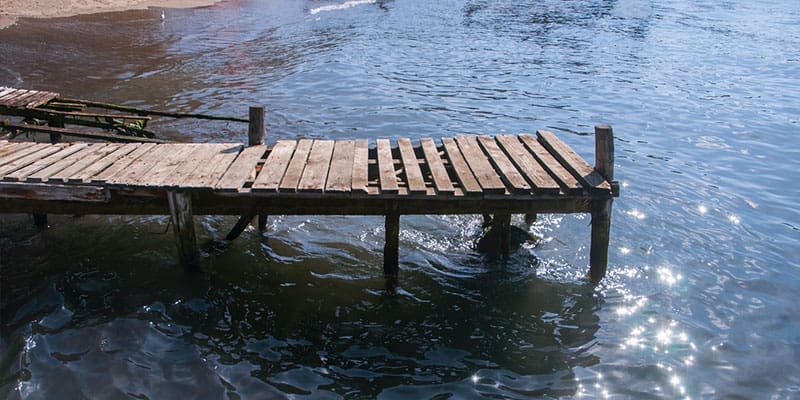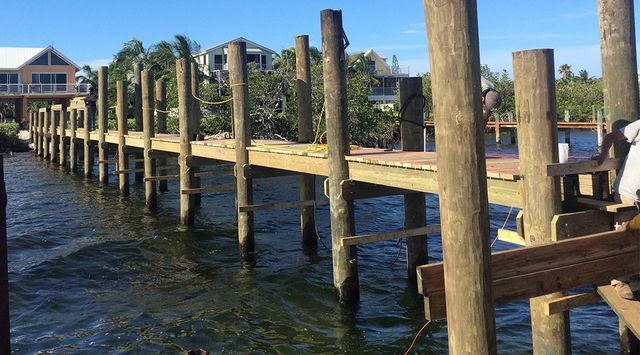Comprehending the Costs Involved in Dock Repairs
How to Address Common Dock Fixing Issues for Safe Water Tasks

Identifying Common Dock Issues
Identifying common dock problems is critical for maintaining the functionality and safety of your waterside residential property. Normal examinations can help uncover problems prior to they end up being extreme, making certain both the long life of the dock and the security of those that use it. One widespread problem is loose or rusty fasteners. Over time, screws, bolts, and other fasteners can become loosened as a result of constant direct exposure to water and weather components, resulting in structural instability.
One more typical issue is the degradation of flotation protection devices. These devices are important for keeping the dock resilient, and any damage or punctures can create the dock to listing or sink. Routinely looking for leaks or water logged drifts can preempt much more substantial problems.
In addition, algae and barnacle accumulation on the dock's surface can develop slippery and harmful conditions. This biofouling not just positions a threat to customers however can additionally accelerate the degeneration of the dock materials.
Last but not least, examining for indicators of rust on metal parts is necessary. Corrosion can compromise the integrity of the dock's framework, making it dangerous. By consistently determining these usual dock issues, you can guarantee that your dock continues to be protected and functional for several years to come.
Fixing Rotting Wood
When addressing the concern of decomposing wood on your dock, it is important to act swiftly to stop more degeneration. Begin by thoroughly inspecting the entire framework to recognize all impacted locations. Make use of a screwdriver to penetrate the timber; if it sinks in conveniently, the timber is most likely rotted and needs immediate attention.
Be sure to cut back to healthy and balanced, strong timber, guaranteeing you get rid of all jeopardized material. After elimination, treat the remaining timber with a timber chemical to protect against future rot.
Next, replace the removed areas with marine-grade lumber or pressure-treated wood, which are more resistant to water damages. Secure the brand-new pieces with galvanized or stainless-steel fasteners to stop deterioration. Additionally, using a water resistant sealant to the brand-new wood can provide an additional layer of security.
Safeguarding Loosened Boards
Just how do you guarantee your dock continues to be risk-free and useful for all its customers? One important aspect is protecting loose boards, which can or else pose considerable threats. Loose boards not only enhance the threat of tripping yet can also endanger the architectural stability of the entire dock.

For reinstallation, use galvanized or stainless steel screws, as these materials use remarkable resistance to rust in marine environments. Guarantee the screws are long enough to penetrate deep right into the underlying support framework, however not as long that they protrude via the dock's surface area. Pre-drilling pilot holes can help stop the timber from splitting.
Lastly, keep a normal inspection routine to determine and deal with any brand-new concerns immediately. By protecting loosened boards successfully, you add to the overall safety and security and durability of your more info here dock, making it a dependable system for water activities.
Maintaining Unsteady Pilings
Ensuring the stability of unsteady pilings is extremely important to maintaining a practical and secure dock. Use a level to check for upright alignment and ensure they are driven deep sufficient right into the substrate to supply adequate support.
If the pilings are found to be unpredictable, one effective method for reinforcement is the use of added bracing. Cross-bracing with treated lumber or galvanized metal can dramatically improve security. Anchor the dental braces firmly to both the pilings and the dock framework to disperse tons uniformly.

Routine maintenance and periodic review of the pilings' stability are important to making certain long-term dock safety and performance.
Changing Rusty Hardware
Addressing unsteady pilings is just one element of maintaining a dock's stability; one more critical worry is replacing corroded hardware. In time, exposure to wetness and salt can result in the oxidation and corrosion of bolts, braces, and screws, compromising the entire structure's safety and security. Routine evaluation for corrosion is vital, especially after extreme weather or seasonal changes.
When rustic hardware is recognized, instant activity is required. Begin by picking marine-grade stainless-steel or galvanized hardware, both made to withstand the extreme aquatic environment. Make certain that you have the proper tools, such as screwdrivers and wrenches, to safely remove the old, rusty pieces without causing additional damages to the dock.
After eliminating the rusty hardware, completely tidy the affected locations to eliminate any residual rust or particles. Apply a rust-inhibiting primer to subjected steel surfaces before mounting the new hardware. Tighten up all fixtures safely to avoid future loosening, and regularly examine the installations to make certain recurring stability.
Replacing rusty hardware not only expands the dock's lifespan but likewise significantly enhances the safety and security of water tasks. By proactively managing corrosion, you protect both the framework and its users, making sure a safe and secure and enjoyable beachfront experience.
Verdict
Normal assessments and upkeep are vital to attend to typical dock fixing concerns and ensure safe water activities. By recognizing and treating problems such as rotting timber, loosened boards, unstable pilings, and rusty hardware, architectural stability and longevity can be substantially enhanced. The application of marine-grade products and ideal treatments better strengthens the dock versus environmental stress factors. Such aggressive procedures add to the general safety and security and performance of dock structures, promoting a safe environment for water-based tasks.
Making certain the security of water tasks hinges significantly on the correct upkeep and repair of anchors (Dock Repairs). These tools are essential for maintaining the dock buoyant, he said and any kind of damage or slits can trigger the dock to list or sink. By regularly recognizing these common dock issues, you can make sure that your dock stays protected and practical for years to come
Ensuring the stability of unstable pilings is paramount to preserving a useful and secure dock.Regular evaluations and maintenance are necessary to deal with typical dock repair see this page concerns and make sure secure water tasks.